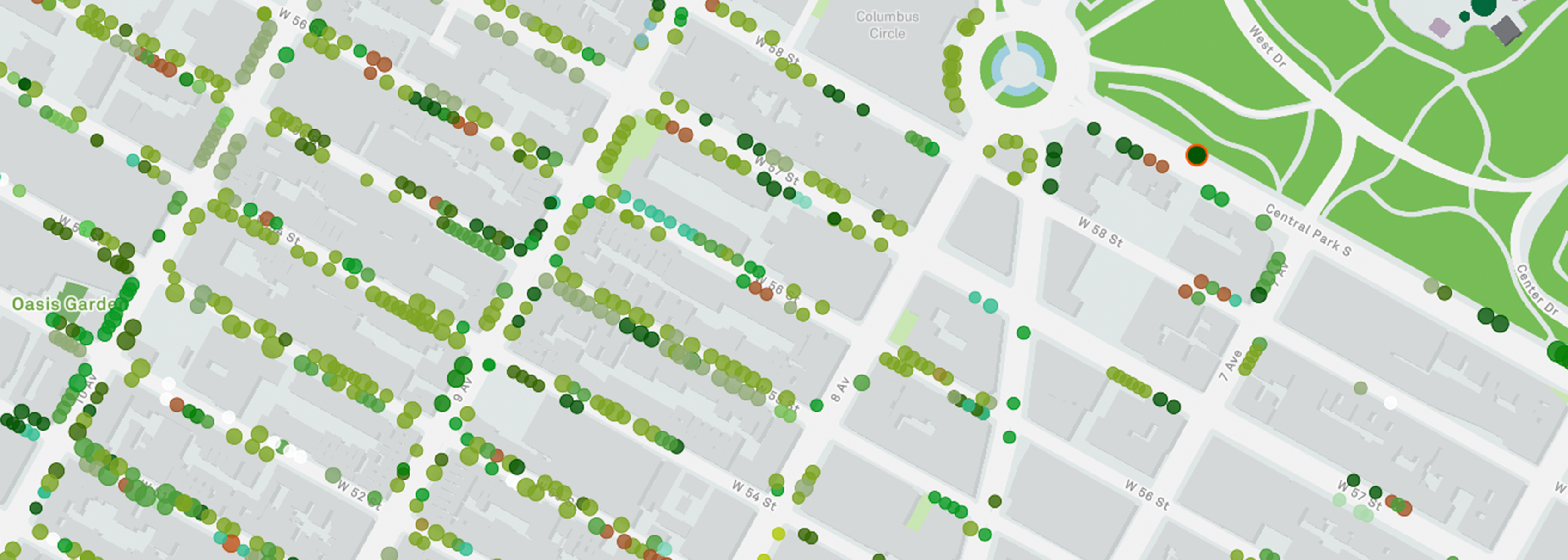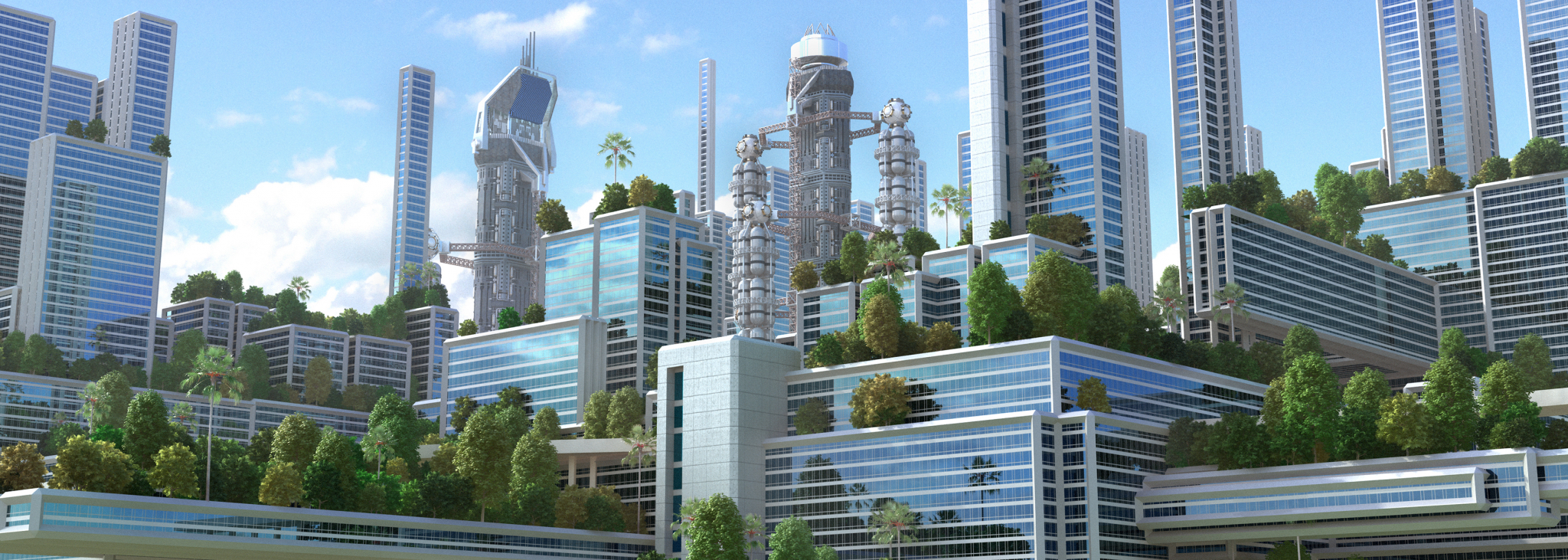Green city | 31 March 2020
Article: Climate change- why it’s up to your city to act now
It’s one of the hottest topics, the talk of the day even: climate change. We all know we have to cut CO2 emissions. The facts are indisputable. If we do nothing, global temperatures will rise by at least 35°F from 2030 to 2052, warns the UN Intergovernmental Panel on Climate Change (IPCC). Clearly, we all already know that time is running out. But are we making changes yet? And did you know that especially as a city you can make a significant difference?

Image-driven data provides new insights necessary to start making significant changes
The effects of a global temperature rise of 35°F are enormous: longer droughts in unusual places (even in Europe), more intense storms and heavier hurricanes. Changes like this will cause migratory movements, wiping out animal species and killing coral reefs. Researchers also calculated that the economic damage of climate change comes down to 54 trillion (!) dollars. Unfortunately, we can’t make the reality of our situation any prettier than this.
The almost 200 governments who signed the Paris Climate Agreement in 2015 gathered in Katowice, Poland last December. They aimed to discuss the world’s status and to talk about the realization of their agreed plans. The main topic: the increase of global temperatures has to stay below 36°F. Unfortunately, it became clear that for most countries it is hard to go from preaching to practice.
The UN ‘Emissions Gap Report’ shows that there is still time to reduce global warming. But to accomplish this, we have to start acting now. UN experts found that the chance to keep the temperature rise at 35°F is shrinking and if we wish to stay below a change of 36°C, we have to triple our efforts. To maintain a maximum change of 35°F by 2100, according to the IPCC: ‘fast, far-reaching changes without precedent’ are needed. Changes like higher CO2 taxes, innovative techniques, a marked decrease of polluting activities and an increase of ‘green areas’. Research shows that otherwise we will encounter the effects in the next 20 years already. Bad news, right? Luckily, this is where your help comes in.
Real change happens in your city
We tend to focus on changes on a global level, trying to get world leaders to take a stand. But while we’re concerned with the actions of politicians and global organizations, activities within cities have even more of an impact. More and more we see that the changes we have to make begin locally. Where national governments are obviously struggling to create to-the-point action plans, cities are often more flexible. Urban sustainability projects are much more innovative and effective than plans on the world stage. Therefore, the real changes are coming from urban policies.
Around the world city leaders are taking action to make their cities future-proof. By implementing sustainable adjustments cities can make a meaningful global impact. Their power to act on climate ambitions is enormous. And it works even better when they collaborate. The organization C40 connects 94 of the world’s largest cities to take action, leading the way towards a more sustainable future. Representing more than 700 million citizens and one quarter of the global economy, mayors of the C40 cities are committed to delivering on the most ambitious goals of the Paris Agreement at the local level.
With more public green areas, smart local energy management, and by cutting down urban traffic and facilitating creative green initiatives, your city can make a huge difference. Trees in public areas, for example, can reduce the energy required for heating and cooling and can take in a lot of CO2. A better balance between concrete and greenery can cut down CO2 emissions greatly, and also makes the city more attractive and livable. Local initiatives and relatively small adjustments can already minimize the environmental impact of the city. For example, the city of Paris is using image data to regulate urban traffic and parking, reducing traffic congestion and therefore CO2 emissions. And the city of Amsterdam created 18 mini parks, greened up 21 schoolyards, and realized 11 natural playgrounds between 2015 and 2017. These simple steps add up to 13 square miles of green in the city.

What’s your ‘green status’?
A good first step to create a greener city is a clear, detailed view of the environment and the city’s ‘green status’. The city of Philadelphia, for example, photographed all of its 112.000 trees to get more insights into their geolocations, health and required maintenance. Also New York City mapped its 694,430 trees and calculated the environmental benefits they experience from those trees. Bike lanes, parking facilities, parks and green borders can also be mapped with the use of detailed images. And by mapping rooftops, electric light plants and traffic lights, we can investigate energy reduction possibilities with the use of LED lampposts and solar panels.
The same goes for traffic management, parking areas, and bike lanes. To ensure a healthy environment, cities aim to channel traffic out of the city. The city of Frankfurt, for example, optimized its parking management with the help of image data. They find out where and under which circumstances parking space is available. Their goal is to lead the city’s visitors to parking areas outside the city and persuade them to use public transport to get into the city center. This not only relieves the environment, but also cuts down on city traffic and improves livability for citizens.
Also, it is time to start reducing CO2 emissions from within organizations. By planting trees, by transferring CO2 taxes, plus the many opportunities by improving efficiency in the way of working. For example, if you could collect insights or assess situations remotely and even online, it saves many field visits. That is; car rides or CO2. Using up to date imagery and data of your city’s public spaces offers important visual support and could be helpful achieving environmental goals. In many cases on site field visits are not required anymore leading to substantial CO2 reduction.
So, do you already know how you can make difference? How can your city act efficiently and resolutely to help save the planet? One way to start is by researching your own ‘green status’. Image driven data can help you map interesting data and discover opportunities within your city. It’s time to make a change. And change starts with you.
Curious about how your city can reduce its impact? At Cyclomedia, we provide insights and solutions to minimize your carbon footprint.